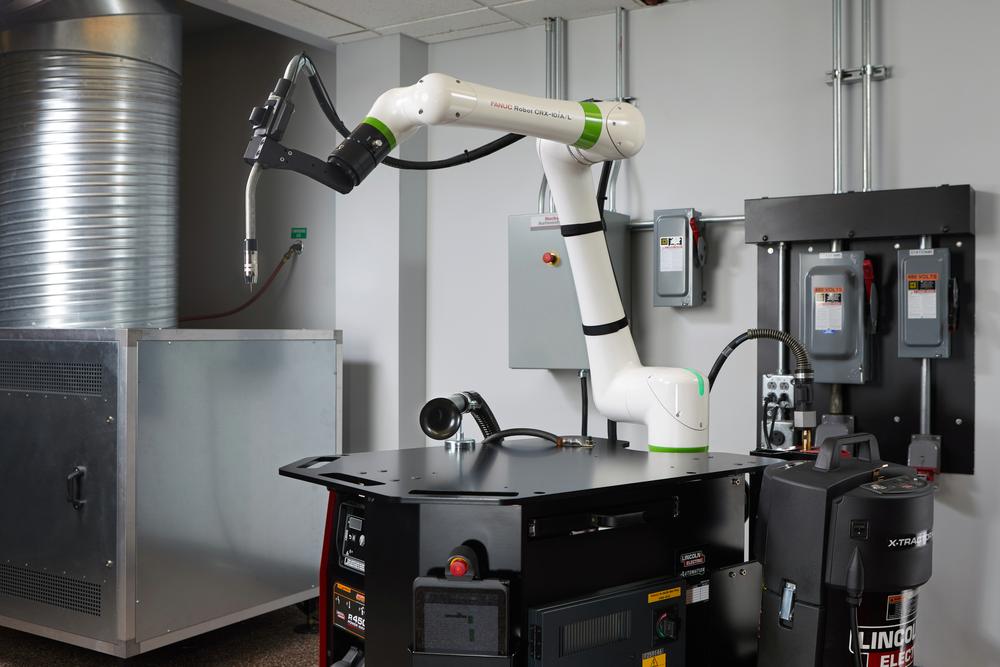
Cost Justification for a Welding Cobot (or Robot)
When making an investment into automation, it is important to calculate your Return On Investment (ROI). The term ROI is a fancy way of saying how long it will take until this equipment makes me more money than it cost me. ROI can be calculated many ways and must meet different requirements for different companies, but below is a good start to cost justifying your purchase.
The first and easiest thing to calculate are direct cost savings. Direct costs are costs that can actually have a dollar value put on them. Purchasing agents love direct cost savings because they look great on paper. The most expensive direct cost in most welding jobs is labor: their hourly wage and the overhead associated with each worker. The overhead includes cost like bonuses, vacation time, holiday pay, sick days, insurance, HR cost, etc. The typical labor and overhead cost is three times the hourly wage of the employee meaning that a $20/hr employee actually cost the company $60/hr to have on staff. When robots are introduced, the very conservative numbers are that one welding robot will double the output of a manual welder, but in reality the production rate of a robot is typically triple that of a manual welder. The actual productivity of a robot can be calculated using a cycle time analysis formula. Contact Arc Solutions, Inc for a cycle time analysis on your parts if you are interested in working towards automation.
Consumables are another direct cost savings. Contact tips in robots will weld more parts than contact tips in manual applications. This is because the contact tip to work distance is more accurately maintained to create a smoother arc and less spatter. Weld cleanup and part rework is also reduced because the spatter is much more controlled and the robot is far more accurate than a human can be. As you well know, the cost of grinding wheels and labor associated with cleanup and rework is a number that adds up quickly and adds no value to the part. Over welding parts is a common human error also. Welders will error on the side of caution and create bigger welds than required when welding manually. With robotics the exact weld size is controlled so it speeds up travel speeds, lowers the amount of wire consumed, and uses less shielding gas all while increasing the quality of the weld.
Indirect cost savings are a little more difficult to put a number on. The biggest indirect savings from a robot is weld quality. Robots make perfectly consistent movements every time so you can be confident that the weld is the right size and in the right location. You can also be confident that welds didn’t get skipped over by human error. Weld spatter and wire stubs being cut off at the end of the torch are common when manual welding. However, with robotics this can be closely controlled and a higher percentage of the purchased wire actually becomes weld metal and not wasted material that needs swept up off of the floor.
In today’s market, no one is looking to get rid of employees, but instead the exact opposite is happening. Rather than hiring employees, the addition of cobots and robots allow you to free up and move existing employees to other jobs in the shop. On a similar topic, the employee training required as a robot operator is far less than that required as a welder. The pay scales of robot operators vs. manual welders reflect the necessary skills for the job as well with operators typically earning a lower hourly wage than welders. The one thing robots do require is someone with the proper training to program them. First time robot purchasers typically get free training for one person. The standard length of training is four (4) days. It is important that the robot programmer has some welding experience as well as being comfortable with computers. Cobots however are much less technical when it comes to programing. With the most recent programming methods being icon driven; a production welder who is comfortable with a smart phone can be programming the cobot on their own with only a few hours of training.
There are a few options for getting automation into your shop. The traditional way was a full purchase of the equipment from a number of integrators. Another option is rental or lease to own plans. These plans allow customers to get introduced to automation without having such a large upfront risk. Arc Solutions has rental plans available for both cobots and traditional robots. Our lease to own plan has a percentage of the lease price being applied towards the purchase price of the equipment if you choose to buy. We also offer financing options for customers who are looking to buy equipment.
Reach out to Arc Solutions, Inc. today if you would like to explore your automation options. We can be contacted by phone at 419-542-9272 or via email at office@arcsolinc.com
Back to blog

